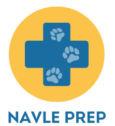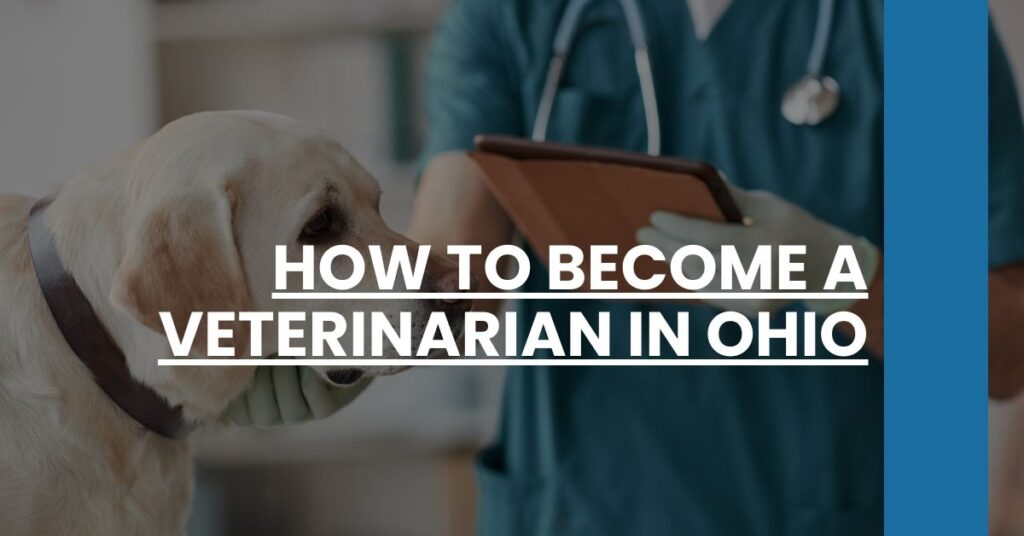Looking for schools in a specific city? Check out our lists of NAVLE in Columbus, Cleveland, Cincinnati, Toledo, Akron, and Dayton.
Embarking on how to become a veterinarian in Ohio is an exciting journey.
- Gain essential knowledge: Understand the role of a veterinarian and the skills required.
- Prepare academically: Focus on high school and undergraduate courses in sciences.
- Explore top institutions: Learn about Ohio State University and other key schools.
Discover the steps on how to become a veterinarian in Ohio and start your path to a rewarding career.
- Understand the Role of a Veterinarian
- Educational Prerequisites and Undergraduate Preparation
- Certification and Finding the Right School
- Applying to Veterinary Schools in Ohio
- Curriculum and Clinical Training
- Obtaining Licensure in Ohio
- Continuing Education and Professional Development
- Career Opportunities and Employment Prospects in Ohio
- Salary Expectations for Veterinarians in Ohio
- Professional Organizations and Networking Opportunities
- Looking for Veterinarian Information On States Bordering Ohio?
- Conclusion
Understand the Role of a Veterinarian
A veterinarian provides medical care for animals. They diagnose illnesses, perform surgeries, and prescribe treatments. You will also guide pet owners on proper care routines and preventive measures.
Key Responsibilities of a Veterinarian
- Patient Care: You will examine animals, run diagnostic tests, and decide on the best treatment plans.
- Surgical Procedures: Conducting surgeries on animals, from routine spaying to more complex procedures.
- Emergency Care: Handling urgent cases and providing critical care support.
- Client Communication: Educating pet owners on healthcare, nutrition, and preventive measures.
- Research and Development: Some veterinarians engage in research to advance veterinary medicine.
Essential Skills for a Veterinarian
- Communication Skills: You need to explain complex medical information to pet owners clearly.
- Empathy and Compassion: Understanding and empathizing with pet owners’ concerns is crucial.
- Problem-Solving Skills: Diagnosing and treating animals often require creative solutions.
- Manual Dexterity: Surgical and diagnostic procedures need precision and steady hands.
- Attention to Detail: Thoroughness in examining animals and recording information is vital.
Why Choose a Career as a Veterinarian?
Having a passion for animals and science makes veterinary medicine highly rewarding. It allows you to impact animal welfare and public health positively. Moreover, the profession offers diverse specializations and career advancement opportunities.
Educational Prerequisites and Undergraduate Preparation
Your journey begins with a solid foundation in high school and undergraduate education. This stage sets the academic groundwork necessary for veterinary school.
High School Preparation
- Courses to Focus On: Excel in biology, chemistry, and physics. Mathematics and English are also essential for developing analytical and communication skills.
- Extracurricular Activities: Participate in science clubs, animal welfare activities, or volunteer at a local vet clinic.
Undergraduate Degrees and Recommended Courses
Most aspiring veterinarians pursue degrees in related fields like animal science, biology, or pre-veterinary studies.
Relevant Undergraduate Courses:
- General Biology: Understanding the basics of living organisms.
- Organic Chemistry: Essential for grasping biochemical processes.
- Physics: Helps in understanding body mechanics and diagnostic technologies.
- Animal Physiology: Provides insights into animal body systems.
Gaining Practical Experience
Hands-on experience is invaluable. Engage in:
- Volunteer Work: Work at animal shelters or veterinary clinics.
- Internships: Seek internships related to animal care or veterinary support. Ohio has programs through the Ohio 4-H Youth Development’s veterinary science series, providing practical exposure.
Certification and Finding the Right School
Choosing the right veterinary school and understanding the certification process sets the stage for your professional journey.
Importance of Accreditation
Accreditation by the American Veterinary Medical Association (AVMA) ensures that a school meets the educational standards required for professional licensure.
Certification Process
- Completion of AVMA-Accredited Program: Graduating from an accredited program qualifies you to sit for licensure exams.
- NAVLE: The North American Veterinary Licensing Examination is a critical step in your certification.
Tools for School Selection
Several resources can help you select the right school. Here are some points to consider:
- Location: Proximity to home, availability of residential facilities.
- Program Strength: Specializations offered, faculty expertise, resources, and facilities.
- Opportunities: Clinical experience, internships, and partnerships with local clinics.
Exploring these factors can streamline your decision-making process.
Applying to Veterinary Schools in Ohio
The application process for veterinary schools is rigorous and competitive. Understanding the requirements will help you prepare effectively.
Meeting Academic Criteria
- Competitive GPA: Aim for a GPA above 3.5 to ensure your application stands out.
- Standardized Tests: Most schools require the GRE, and a strong score can enhance your application.
Key Application Materials
Beyond academic performance, you need:
- Letters of Recommendation: Usually from veterinarians or professors familiar with your work ethic and dedication.
- Personal Statement: A compelling narrative of your passion for veterinary medicine and career goals.
Ohio State University College of Veterinary Medicine
Ohio State University (OSU) College of Veterinary Medicine is a top choice for many aspiring veterinarians.
Key Features of OSU:
- DVM Program: The Doctor of Veterinary Medicine (DVM) degree offers a comprehensive curriculum covering essential veterinary science areas.
- State-of-the-Art Facilities: OSU provides access to advanced clinical training facilities.
- Expert Faculty: Renowned faculty members guide students through coursework and research.
- Practical Opportunities: Partnerships with the Cleveland Metroparks Zoo and other institutions offer diverse practical learning experiences.
Curriculum and Clinical Training
The veterinary program curriculum shapes your knowledge and skills through a structured blend of theoretical and practical learning.
Curriculum Structure
The typical veterinary program spans four years and is divided into:
- Preclinical Phase: Initial years focus on foundational subjects such as anatomy, biochemistry, and microbiology.
- Clinical Phase: Later years involve rotations through various veterinary departments like surgery, internal medicine, and emergency care.
Hands-On Experience
Clinical training is vital to your development as a veterinarian.
- Rotations: Gain experience in different areas such as companion animal care, equine medicine, and livestock management.
- Internships and Residencies: These provide specialized training and are essential for those pursuing niches within veterinary medicine.
By engaging actively in both academic and hands-on training, you will build the expertise required to succeed in your veterinary career.
通过活跃参与学术和实践培训,你将建立成功所必需的专业知识。
This blend of theory and practice ensures that you are well-prepared for the dynamic field of veterinary medicine.
Obtaining Licensure in Ohio
After completing your veterinary education, you need to obtain licensure to practice in Ohio. This process ensures you meet the required competency standards to provide professional veterinary care.
North American Veterinary Licensing Examination (NAVLE)
NAVLE Overview:
The NAVLE evaluates your knowledge and skills across various aspects of veterinary medicine. It consists of 360 multiple-choice questions covering topics like animal diseases, diagnostics, therapeutics, and public health.
Preparation Tips:
- Study Resources: Utilize textbooks, NAVLE prep courses, and online question banks.
- Practice Exams: Taking multiple practice exams can help you get familiar with the exam format and identify knowledge gaps.
- Time Management: Allocate consistent study time leading up to the exam.
Ohio Veterinary Licensing Exam
State-Specific Knowledge:
In addition to the NAVLE, Ohio requires passing a state-specific licensing exam that tests your understanding of local laws and regulations related to veterinary practice.
Exam Application Process:
- Submit Application: Complete the application form provided by the Ohio Veterinary Medical Licensing Board.
- Background Check: Undergo a background check as part of the application process.
- Application Fee: Pay the licensing fee, which typically ranges from $300 to $400.
Licensing Board and Continuing Education
Ohio Veterinary Medical Licensing Board:
This board oversees the licensure process and maintains professional standards within the state.
Continuing Education Requirements:
To keep your license active, Ohio mandates 30 hours of continuing education every two years. Engaging in seminars, workshops, and professional conferences is essential for staying current in the field.
Continuing Education and Professional Development
Continuing education ensures you stay informed about advances in veterinary medicine, enhancing your skills and knowledge.
Importance of Lifelong Learning
Lifelong learning enables you to provide high-quality care and stay abreast of the latest developments in veterinary science. It also helps you adapt to new technologies and methodologies in animal care.
Ohio Requirements for Continuing Education
Credit Hours:
You must complete 30 hours of approved continuing education biennially. These can be attained through various formats:
- Seminars and Workshops: Learn from experts and engage in hands-on training sessions.
- Online Courses: Flexible options allow you to study at your own pace.
- Professional Conferences: Network with peers and gain insights into emerging trends and best practices.
Professional Development Opportunities in Ohio
Ohio State University College of Veterinary Medicine:
The college offers a broad range of continuing education programs, including advanced surgical workshops and specialty seminars.
Ohio Veterinary Medical Association (OVMA):
The OVMA provides resources such as the Midwest Veterinary Conference, which features numerous educational sessions and networking opportunities.
Career Opportunities and Employment Prospects in Ohio
Ohio offers numerous career opportunities for veterinarians across various settings, providing a dynamic job market.
Diverse Career Paths
You can pursue different career paths based on your interests and expertise:
- Private Practice: Work in clinics handling companion animals, livestock, or equine health.
- Research: Engage in veterinary research within pharmaceutical companies or academic institutions.
- Academia: Teach and mentor future veterinarians at veterinary schools.
- Public Health: Focus on zoonotic diseases, food safety, and epidemiology within government agencies.
Job Market and Potential Employers
Ohio has a favorable job market for veterinarians, driven by both demand in rural and urban areas. Key employers include:
- Multi-Clinic Practices: Organizations with multiple veterinary clinics offer various specializations and career advancement opportunities.
- Animal Hospitals: Provide comprehensive care and emergency services.
- Research Institutions: Include universities and private research companies contributing to veterinary science advancements.
- Public Agencies: The Ohio Department of Agriculture and other governmental bodies focusing on animal health and public safety.
Salary Expectations for Veterinarians in Ohio
Understanding the salary landscape helps you plan financially and set career goals.
Average Salary
In Ohio, veterinarians earn an average salary of around $90,000 per year.
Factors Influencing Salary
Several factors can influence your earnings:
- Experience Level: Entry-level veterinarians start at approximately $70,000, while those with significant experience or advanced specialties can earn over $120,000.
- Specialization: Specialized fields like surgery, internal medicine, or oncology tend to offer higher salaries.
- Practice Setting: Veterinarians working in metropolitan areas may earn more due to higher living costs and increased demand.
Salary by Location
Urban centers like Columbus generally offer higher salaries compared to rural areas. This disparity is due to the cost of living and client demand in metropolitan regions.
Professional Organizations and Networking Opportunities
Joining professional organizations enriches your career through networking, advocacy, and access to resources.
Ohio Veterinary Medical Association (OVMA)
Membership Benefits:
- Continuing Education: OVMA provides numerous educational events and workshops.
- Advocacy: Championing the interests of veterinarians in legislative matters.
- Networking: Opportunities to connect with peers and leaders in the field.
Other Notable Organizations
Beyond the OVMA, consider joining:
- American Veterinary Medical Association (AVMA): Offers extensive resources and career support.
- Specialty Groups: Organizations like the American Association of Feline Practitioners (AAFP) provide niche-specific resources and connections.
Networking and Career Growth
Professional organizations offer platforms for networking that can lead to mentorships, collaborations, and career advancements. Engage actively in conferences and social events to build lasting professional relationships.
Looking for Veterinarian Information On States Bordering Ohio?
In addition to Ohio, we suggest looking for schools in nearby states.
- How to Become A Veterinarian in Pennsylvania
- How to Become A Veterinarian in West Virginia
- How to Become A Veterinarian in Kentucky
- How to Become A Veterinarian in Indiana
- How to Become A Veterinarian in Michigan
Conclusion
Becoming a veterinarian in Ohio requires dedication, rigorous academic training, and continuous professional development. Following these steps will prepare you for a fulfilling career in a dynamic and vital field. Start your journey with confidence, knowing that Ohio offers ample opportunities, resources, and support for aspiring veterinarians.

